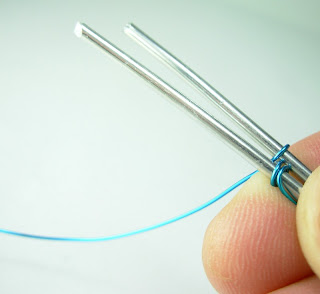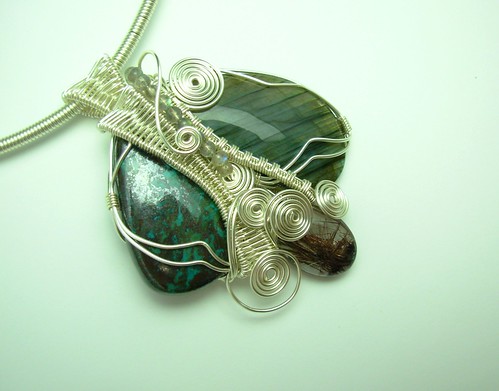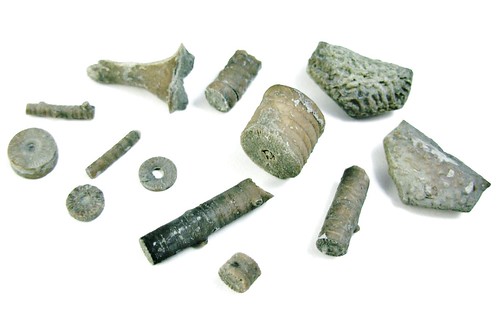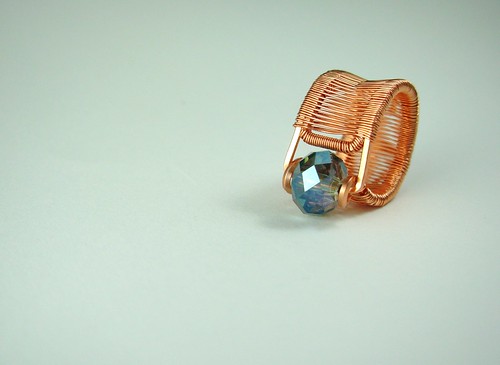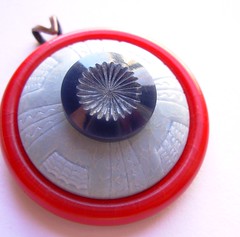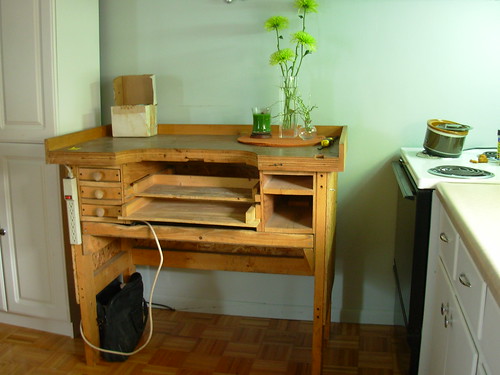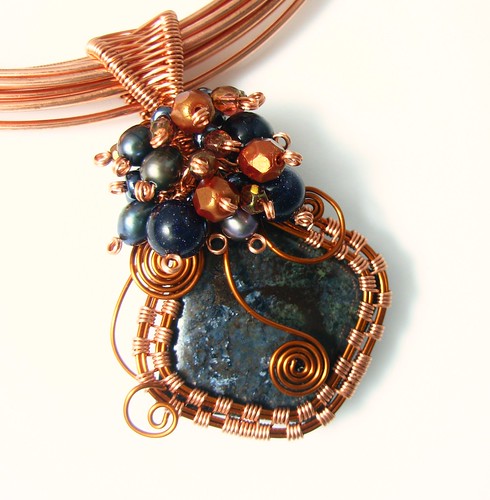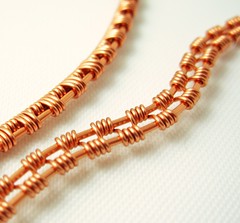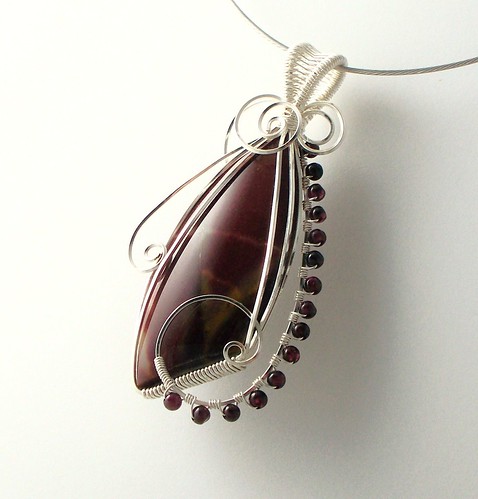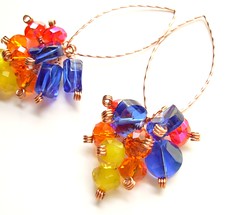
This all began as a discussion about making Christmas wreaths. I've been a floral designer for 21 years now and thought I'd give a little primer on this product, a staple to the floral industry, pan glue. This glue comes as dry chips, as seen here and is melted in a skillet for quick and easy use when designing with silk and dried product. What makes this so superior is its holding power. Many glues, including traditional hot glue (glue gun) will become brittle and pop off in changing weather. Pan glue (in particular this Oasis brand product) can withstand a torrential downpour, snow and ice, and extreme heat, making it perfect for wreaths and other outdoor floral decorations. Having the glue melted in a skillet makes for easy use as well. Pinecones can be dipped in the glue and shoved right into a wreath. It bonds in a couple seconds, no waiting for it to be safe to let go. Stems can be cut, dipped in the glue and inserted securely and easily into grapevine or into floral foam without worry. However, of a mistake is made, you have to think fast before it has permanently bonded.. It is also wonderful to be able to take a dowel or an old unused floral stem and use like a paint brush to paint glue on the back of small blossoms or pieces of ribbon to tuck into arrangements, wreaths and garlands. I cannot imagine designing anything silk or dried without the aid of this wonderful product.

So, here is my skillet of pan glue. I bought this skillet over 20 years ago at Goodwill and have used it exclusively for my pan glue the entire time. I have only scraped the hot glue out of the skillet one time. It was necessary because I had dropped a whole sheet of moss in the skillet and the dirt from the underside of the moss degraded the glue. I have about a third of the amount of glue in my skillet that I really should have. But, you'll get the gist of it.

This is what the glue looks like in the skillet after it has been melted and solidified many times, or in my case, hundreds of times. It is an opaque golden color. The color of mine is a bit darker because it is really old and really full of pollutants.

Once the glue starts to melt, you can mix around the glue with a dowel rod or an old floral stem. Don't use a spoon or a knife. The metal will conduct the heat and you will burn the hell out of your hand when you try to pick it up and use it.. You can see here that the glue is melting, but not quite ready yet. The corners are still semi hard.

Another way to tell the glue isn't hot enough is that you will create lots of "strings" or "webs" with the glue between dipping the stem in the glue and inserting in your arrangement. The glue should be about the consistency of room temperature honey, and should be completely melted. If you start to see bubbles or the glue just runs right off your stem or stir stick, you have the heat turned up too high. Turn it down and wait until the glue is the right consistency to use it. This product isn't generally harmful, unless the skillet is boiling the glue and you hold your head over the glue steam and breath in...heehee..

NEVER leave the room with the glue pot turned on. If you have to leave the room, unplug it. It's not going to cool off that fast, so you can plug it back in when you return. Once you have established a consistency you like, leave the temperature dial there and just unplug it and plug it in every time to heat it up perfectly.

Once the glue is just right, you are ready to design. Dip the bottom of your floral foam right into the glue and insert into your container. I didn't actually glue my foam in, because I use this container for fresh flowers usually.

Then cut your stems with very heavy duty pliers. The stronger and sharper the pliers, the better. Keep in mind that if you are cutting through a silk stem like the ones I am using in this example, you may be cutting through six to eight 24-16 gauge steel wires all at one time. It may look like one stem, because it has been wrapped with green floral tape, or is encased in plastic. But believe me some of these stems truly take brute strength to cut through. For this one I squeezed as hard as I could while leveraging the tool against my leg. The better the cutters, the more efficient and ergonomic the situation.

Next, dip the end of the stem in the glue and use the edge of pan to scrape off any excess if it gobs on.

Insert the stem about halfway down. If you force it all the way to the bottom, and there are many more stems going into the foam, creating a hole that deep will reduce the integrity of the foam, If very many of the stems will be large and heavy, using a thicker depth of foam and reinforcing it with a cage of chicken wire will provide better structural integrity to your arrangement. I used a healthy amount of glue on these stems because they are quite large and heavy.

I also inserted them a little deeper knowing that the other stem insertions going into this arrangement will be small and few. In theory, this would have been turned into a contemporary plant garden. Hence, the parallel stems... But, since I only did this to demonstrate the glue. It really isn't going to be made into anything at the moment. Happy gluing everyone! P.S. this does not work for jewelry!
 * Step 1: Select wires of two different gauges. One heavier gauge wire, which will be for your two base wires, and a thinner gauge wire to do the weave with. Here, I have used 21 gauge square copper wire for the two base wires, and 24 gauge black enameled copper wire to weave with.
* Step 1: Select wires of two different gauges. One heavier gauge wire, which will be for your two base wires, and a thinner gauge wire to do the weave with. Here, I have used 21 gauge square copper wire for the two base wires, and 24 gauge black enameled copper wire to weave with.  * Step 2: Begin by wrapping your the wire you are weaving with around the base wire four times. You will notice I started with the left base wire and wrapped the weave wire in a clockwise fashion. Sometimes it is easiest to set aside the second wire while you do this very first wrap. Then when your are ready to start the first wrap on the second wire, you can add that wire between your fingers. As I mentioned in the previous post, you may choose to hold the wires together with a little piece of painter's tape here at the beginning to stabilize the wires so they don't move around in your hand.
* Step 2: Begin by wrapping your the wire you are weaving with around the base wire four times. You will notice I started with the left base wire and wrapped the weave wire in a clockwise fashion. Sometimes it is easiest to set aside the second wire while you do this very first wrap. Then when your are ready to start the first wrap on the second wire, you can add that wire between your fingers. As I mentioned in the previous post, you may choose to hold the wires together with a little piece of painter's tape here at the beginning to stabilize the wires so they don't move around in your hand. * Step 4: Every fourth wrap will be like a figure 8 between the wires. You will do three complete wraps on each side, and on the fourth wrap, you will cross to the other side. As you are doing this, make sure each time you cross to the other wire, that the distance between the wires remains parallel. Sometimes it is necessary to run the unwoven portion of your base wires through a pair of soft jaw pliers to straighten them again. If your groupings if four don't seem quite even, gently squeeze them together using your half round pliers (or your fingernails, if you are lucky enough to have them).
* Step 4: Every fourth wrap will be like a figure 8 between the wires. You will do three complete wraps on each side, and on the fourth wrap, you will cross to the other side. As you are doing this, make sure each time you cross to the other wire, that the distance between the wires remains parallel. Sometimes it is necessary to run the unwoven portion of your base wires through a pair of soft jaw pliers to straighten them again. If your groupings if four don't seem quite even, gently squeeze them together using your half round pliers (or your fingernails, if you are lucky enough to have them). *Step 5: Weave to your heart's content. There are many variations that can be done with this weave. Beads can be added in the open spaces as you go. Or, you may choose to do a different amount of wraps on each of the base wires. Just play and have fun!
*Step 5: Weave to your heart's content. There are many variations that can be done with this weave. Beads can be added in the open spaces as you go. Or, you may choose to do a different amount of wraps on each of the base wires. Just play and have fun!


